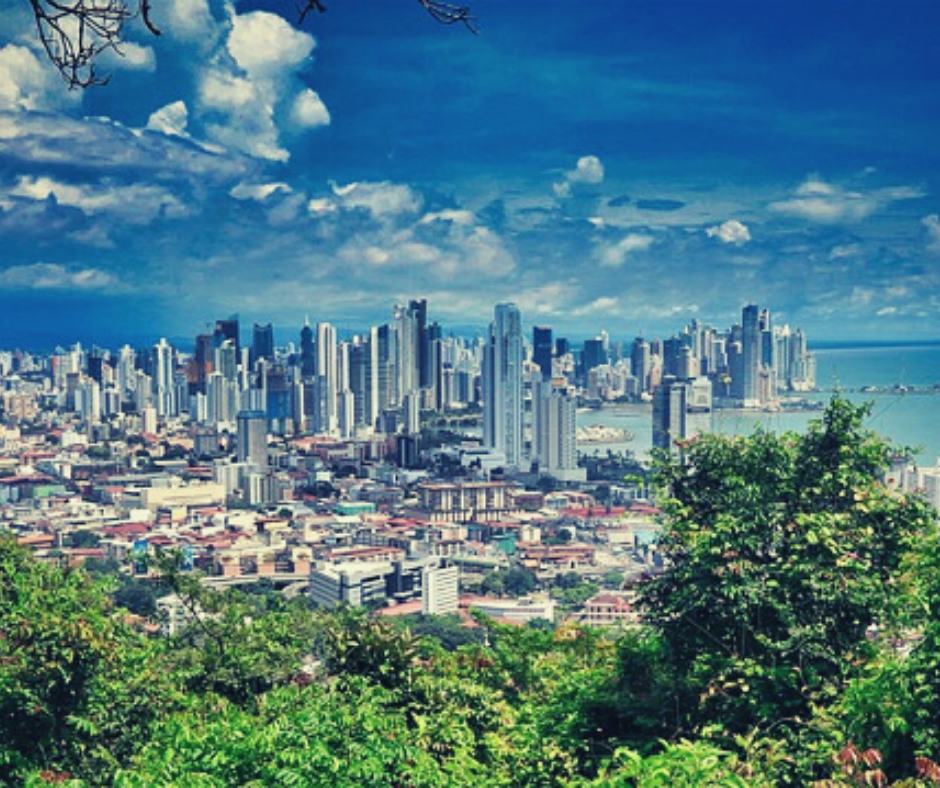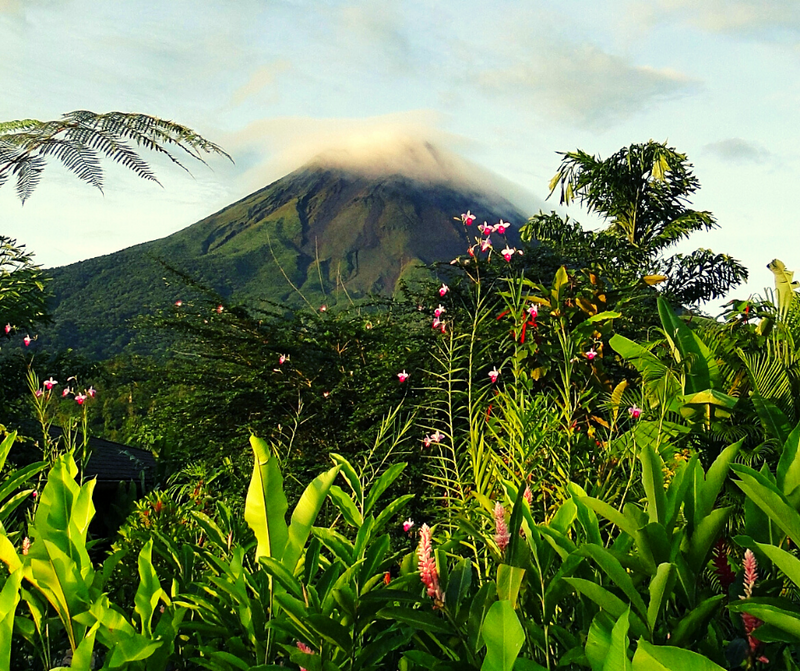Updated 2022, December 16th: Pura Vida Costa Rica! The small tropical country in Central America is home to the happiest people on the planet, to more than 500,000 wildlife species, 900 types of birds, and the most colorful aquatic habitat - the temporarily home to migrating humpback whales, hammerhead sharks, and sea turtles.
Costa Rica is one of the 20 most biodiverse countries in the world, with 32 national parks, 51 wildlife refuges, 13 forest reserves, and 8 biological reserves. White palm-lined beaches of Santa Teresa or Nosara attract more and more digital nomads and long-term remote workers, making Costa Rica's coastal towns one of the most popular travel spots in Latin America. A change from tropical heat to hazy mist is found in the cloud forest of Monteverde, a famous spot for trekking and wildlife observation.
🌱 Travel health insurance for Costa
🇨🇷 Entry requirements for Costa Rica
- Valid visa: Most travelers do not need a visa to enter Costa Rica. To see if your nationality requires a visa, use this link. Many nationalities are granted a 90-day stay upon arrival (EU countries, USA, Canada, and others).
- Return ticket: The immigration wants to see proof of exit in form of a return ticket. It is possible that you are already asked by the airline at check-in to show your return ticket (cruise passage, onward bus ticket, flight ticket).
✈️ How to get to Costa Rica
- Plane: There are several direct flights linking Costa Rica with the USA and Mexico. Coming or leaving from or to Europe on direct flights would connect you to Spain, Switzerland, France, Germany, the UK, and the Netherlands. From the airport in San José, take a shuttle to the city which costs 20 Euro and takes approximately 15 minutes.
🏡 How to find a place
- Airbnb: Plenty of availabilities are found on Airbnb and very common to book your stay through this platform.
- Hotels: Check out accommodation via agoda.com and booking.com. If you want to be close to a specific location, check hotels on Google Maps.
- Lodges and Jungle Reserves: Costa Rica is a natural beauty. Make sure to include a stay in one of the reserves and lodges close to nature.
🚌 Public transport in San José
- Uber: An easy and safe way to travel around is by using Uber which is widely available in rural and tourist areas.
- Taxi: In the capital of San Jose, taxis must use their meters by law. Outside of San Jose, most taxis don't have meters and you need to agree upon a price before entering the car. Bargaining is accepted. Tipping the taxi driver is not common unless the driver does an outstanding service or helps with your luggage.
- Scooter: It is possible to rent scooters in Costa Rica. Rental services ask prices like 30 to 40 Euro per day for a bike.
🏘 Where to stay in San José
- Escazú: Living in Escazú means access to stylish condo buildings and modern apartment complexes. In this charming area, 8 km west of downtown San José, you will find luxurious shopping malls and high-end bars and restaurants.
- La Sabana: The Sabana metropolitan park is right in the heart of San José and the area around is a popular middle-class neighborhood. You find local restaurants and coffee shops, some retail, and services here.
🧑🏻💻 Where to work from in San José
Coworking spaces
- Gracias coworking: The community-focused coworking space has two locations, one in La California and one in Barrio Escalante. Both spaces have modern interiors, fast and reliable internet, and provide a professional working environment. Unlimited monthly membership costs 160 Euro.
Coffee shops
- La Mancha: This place is for you if you are a coffee enthusiast. La Mancha is located in a historical building. Comfortable chairs and a stable wifi connection make it a doable work spot.
- Café Rojo: Not sure, if you had authentic Vietnamese fusion cuisine in mind when reading the name Café Rojo. This little eatery serves delicious Vietnamese food and makes a good work spot.
🚊 How to travel around
- Shuttle Bus: The tourist shuttle busses are minivans you can book private and they will take you from and to Quepos/Manuel Antonio, Monteverde/Santa Elena, Jacó, Dominical, Uvita, Puerto Jiménez, Arenal, Montezuma, and Mal País. Check out Easy Ride.
- Bus: Costa Rica has a bus network but it is not the greatest. First, there is no main central terminal in San Jose that would make it easy to purchase tickets or see bus schedules. The ticket offices and bus terminals are scattered throughout the city and are operated by a single bus company. Overland buses with a ride longer than 4 hours will include a rest stop as the overland busses do not have a toilet. Busses (directivo) go directly from A to B including a few stops.
- Rental car: Most car rental services will accept most international driver's licenses or an international driver's permit issued from your home country. Roads in Costa Rica are okay but not great. Fuel can be purchased at petrol stations and in more remote areas at corner stores as well. Depending on the season you will rent a 4WD. You can rent a car for about 200 to 300 Euros per week but you need to pay a deposit and mandatory local insurance which is an additional 10 to 40 Euros per day. Theft is very common in Costa Rica and thieves recognize rental cars immediately. Never leave anything valuable in your car.
- Collectivo: The cheaper version to get around Costa Rica is by using the Collectivo, which is a hop-on and hop-off form of transport. Collectivos show up or not, are rather crowded, flexible in their route, and not reliable as they can stop anywhere along the road. You pay directly in cash to the driver.
- Horseback riding: This sounds like a joke and can be quite time-saving. But if you need to go between Monteverde and Volcano Arenal, consider riding the 20 km on a horseback, instead of driving 100 km on a bad road. Horseback riding can be an adventure in itself but also a form of transport. Found here.
🎖Must see
- Central Avenue: Central Avenue is the oldest street in San José and the economic, cultural, and commercial hub of the city.
- Monteverde: The could forest in Monteverde is a famous ecotourism spot in an upper elevation and part of a rainforest. Accommodation with reliable internet is mostly found in Santa Elena, a little town with coffee shops, restaurants, coworking spaces, and hotels. Santa Elena is good for short-term stays. You will find a Selina on the road to Monteverde, always an indicator that digital nomadism has arrived.
- Nosara: The coastal town of Nosara is another spot digital nomads dream of. The vibe is everything from yoga hippie to hipster nomad, but they all have in common that they are willing to pay a high price for staying in Nosara. Prices have skyrocketed in the past years and gentrification is a problem. However, this instagrammable place attracts thousands of people every year and became a magnet for digital nomads.
- Santa Teresa: An upcoming hotspot in the Puntarenas province. The small town offers reliable internet, good accommodation choices, palm-lined sandy beaches, a verdant jungle, and a growing community of digital nomads and long-stay remote workers that transit into expats.
- Wildlife: From the tiny red-eyed frog, and the small hummingbird, to shimmering toucans and scarlet macaws, gentle tapirs, majestic leopards, and cheeky monkeys - Costa Rica is well known for its eco-friendly and nature-preserving approach to keeping the country green, diverse and sustainably growing back forest and natural habitats for its wildlife. Make sure to book a tour through one of the many national parks and reserves to see the country's beauty.
- Hot springs: 5 active volcanos heating up hundreds of hot springs, a great treatment for sore muscles to soothe in the thermal waters after a long trek.
- Poas Volcano National Park: If you have time visit one of the world's largest active volcanoes in Alajuela province, about a 1.5-hour drive from San Jose. Tickets need to be purchased in advance online, and visitor groups depart every 20 minutes from the entrance. It is a 45-minute guided tour. The views depend on the weather and volcano activity but there is no refund if your view is blocked by clouds. Tours can be scheduled between 7 am and 2 pm, every day including weekends and holidays.
- Tortuguero National Park: Only accessible by plane or boat, the Tortuguero National Park in Limón province is a haven for wildlife watching, including mangroves, swamps, and rainforests as well as beaches, and lagoons. The area is inhabited and is therefore only accessible for a day trip.
💡Good to know
- Internet: The average broadband internet speed is 50 Mbps download and 9 Mbps upload.
- Sim card: Movistar and Claro are constantly expanding their network and are good to go with their prepaid packages.
- Sockets: Type A, Type B.
- Climate: Costa Rica is beautifully warm all year, with an average annual temperature of 25-32°C on the coasts and 23°C-26°C in the countryside and on the mountainsides. The best travel time for Costa Rica is January to April. In February, the temperature is between 18ºC and 27ºC.
- Digital nomad community: Costa Rica shows a growing community of digital nomads and expats and offers different areas, such as the green spots of Monteverde or beach places such as Nosara or Santa Teresa.
- English: About 10% of the adult population in Costa Rica speak English. Although that doesn't sound a lot, pretty much everyone working in hospitality or tourism speaks English pretty well.
🚧 What to avoid
- Water pollution: Waster water treatment in Costa Rica is pretty bad resulting in agricultural wastewater and poor septic tanks. Some areas of Costa Rica's water used by local communities are contaminated with E. coli and other bacteria, especially during the wet season.
- Crime: Locally organized criminal groups are on the rise in Costa Rica, and the crime rate rose significantly in the last few years. "In 2017, Costa Rica broke the country’s record in reported homicides with 603 and a homicide rate of 12.1 per 100,000 individuals. And 2018 isn’t looking much better" (Kjelstad, 2018). Overall, tourist areas are fairly safe but rural areas can be different. The theft rate in tourist areas is increasing, and thieves break into cars, and apartments knowing that a foreigner lives there. Make sure to always lock your valuables in the safe and never leave anything valuable in your rental car.
- Costs: Costa Rica is the most expensive country in Central America and prices are rising year by year.
- Gentrification: Digital nomads and expats are raving about places like Nosara, a small beach town that is divided into an expensive touristy part and a local part. Places like Nosara are overbuilt, and come with water shortages and poor infrastructure, especially for all the people building the luxurious condos. It is relatively easy to buy land in Costa Rica and gain residential status although many new landowners are not allowed to start building a house on their own land for many years, due to the over-development of some locations.
🚴🏻♀️ How to stay healthy
Stay active
- Watersports at Isla del Coco: Located 550 km off the Pacific coast of the mainland, Isla del Coco is the only island with a rainforest. The protected marine area surrounding the island is home to sharks, rays, dolphins, and much tropical fish which makes the island a diver's paradise.
- Hiking on Isla Tortuga: The island is inhabited by humans and only accessible for a day trip. You can go snorkeling, bird watching, hiking, swimming, and kayaking. Palm-lined beaches make Isla Tortuga a very instagramable place that looks like the perfect tour agency advertisement.
- Hiking on Isla del Caño: Another inhabited but not less popular spot for nature lovers and sun worshipers is Isla del Caño, around 10 km off the coast of the Osa peninsula. For a day trip, visitors enjoy watersports, hikes, or bird watching. Flora and fauna are diverse and with some patience, you will get one of the famous Costa Rican wildlife in front of your lens.
- Surfing at Playa Uvita: Uvita is not just a great surf spot, but also popular for whale-watching tours, and hikes, for example, to the Nauyaca waterfall.
- Running: Walking, running, jogging - named as you, please. Costa Rica's long-stretched beaches are the perfect setting for some cardio fitness, including running, long beach walks, volleyball, or other fun activities.
- Yoga: Since I do yoga regularly, I have been following two YouTube yoga instructors and both happen to record a big chunk of their yoga classes in Costa Rica. Coincidence? The yoga community is big, especially in touristy areas like Nosara and Santa Teresa and it is not hard to find classes in studios and on the beach. Although I travel with carry-on luggage only, my foldable yoga mat is always ready to get unfolded.
Eat well
- Costa Rican cuisine: Costa Rica is a paradise if you like rice, beans, fish, and meat. I refer to it as one of the rice and beans countries. National dishes include the breakfast dish Gallo Pinto (rice and beans), Casado (rice, beans, salad, tortilla, fried platano, and meat), Tamales (filled banana leaves), or Arroz con Leche (milk rice with cinnamon).
- Grocery shopping: As mentioned earlier, Costa Rica is jar-dropping beautiful but comes with a heavy price tag. Grocery shopping can get as expensive as in Europe or the USA. Stick to local brands, shop local produce, and eat according to the season.
Sleep well
- Eco resorts: When investing in a trip to Costa Rica, you should spend time and money and stay in one of the many beautiful eco resorts. For example the Lapa Rios Ecolodge at Osa peninsula, Tortuga Lodge in Tortuguero, or El Silencio Lodge in the cloud forest of Monteverde. Imagine waking up to the sounds of the chirping jungle, a waterfall, or raindrops on the roof.
Health risks
- Water quality: In general, you can drink tap water in Costa Rica, but we recommend drinking bottled water.
- Air quality: The air quality in Costa Rica is good.










